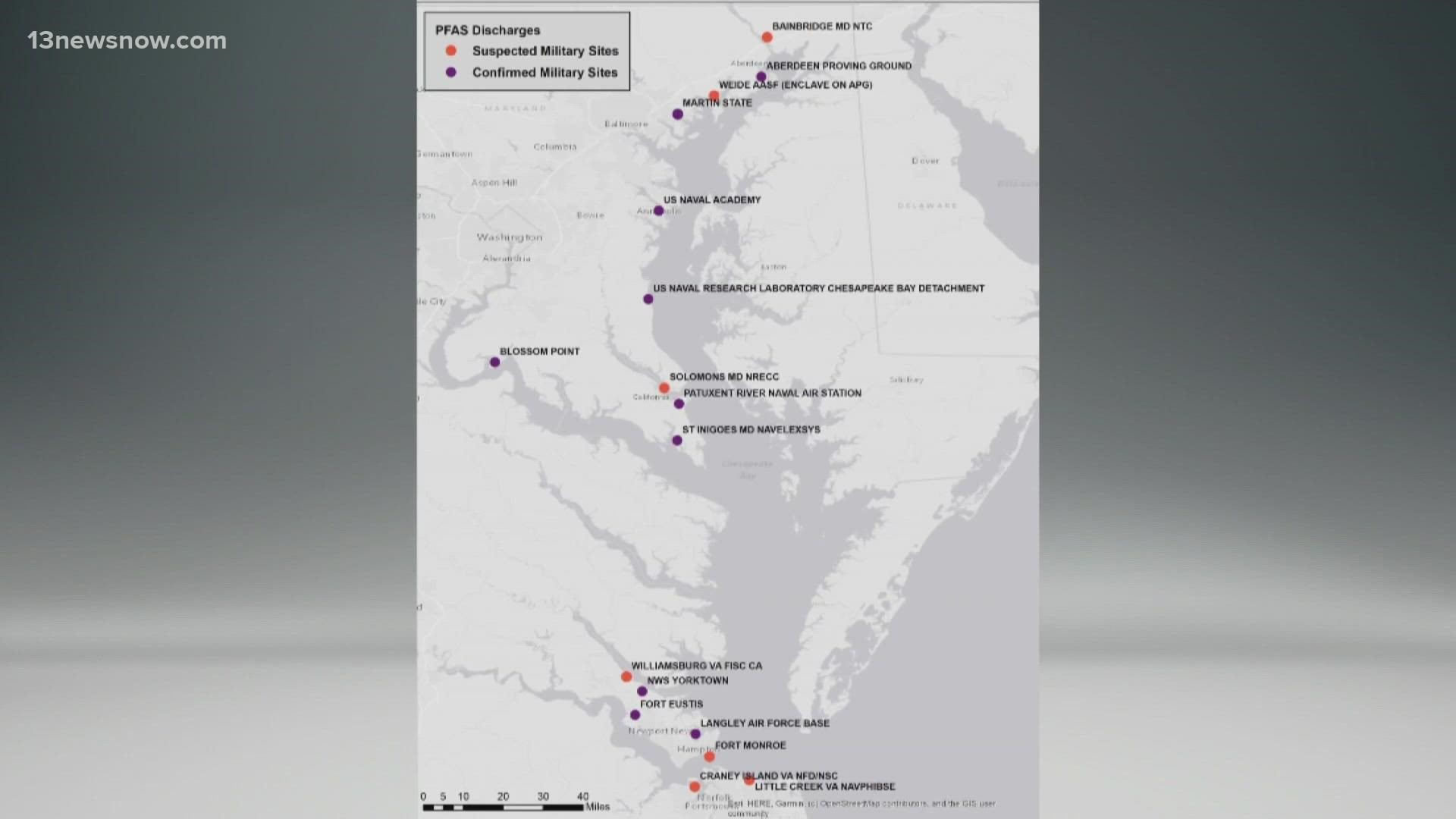NORFOLK, Va. — A nonprofit report says the groundwater of at least nine military installations close to the Chesapeake Bay is contaminated with high levels of toxic "forever chemicals" known as PFAS -- at levels many times above the standards for safe drinking water.
According to this report, which came out Wednesday, PFAS are likely ending up in blue crabs, oysters and other marine life that are consumed by people in Virginia's $600 million seafood industry.
The non-partisan, non-profit Environmental Working Group (EWG) said the "DOD has done little to address PFAS contamination at these bases."
As part of EWG's analysis, the highest detection was reported at Langley Air Force Base; other Hampton Roads facilities making the list were Fort Eustis and Yorktown Naval Weapons Station.
The report says untested local installations that also might contain PFAS include Joint Expeditionary Base Little Creek, Craney Island Naval Fuel Depot and the now-closed Fort Monroe.
The primary source of PFAS is AFFF firefighting foam, which has been used by the branches since the early 1970's.
It can cause a variety of cancers and other severe illnesses.
"Because they've been so strongly linked to cancer and other health problems, this should be treated as a five alarm fire," said Scott Faber, EWG's senior vice president for government affairs. "It is being treated as a five alarm fire by some states, it's just not being treated as a priority by our Defense Department."
The Pentagon said at a hearing last year that it has spent $40 million so far to conduct PFAS exposure assessments in impacted communities.
Maureen Sullivan, special assistant to the Secretary of Defense and the Deputy Secretary of Defense, testified: "In summary, DOD is taking actions to reduce the risks of PFAS. Our actions reinforce the DOD's commitment to meeting critical mission requirements while protecting human health and the environment."
The DOD estimates that future PFAS cleanup costs will total at least $2.1 billion, and has acknowledged that the effort could take decades.

